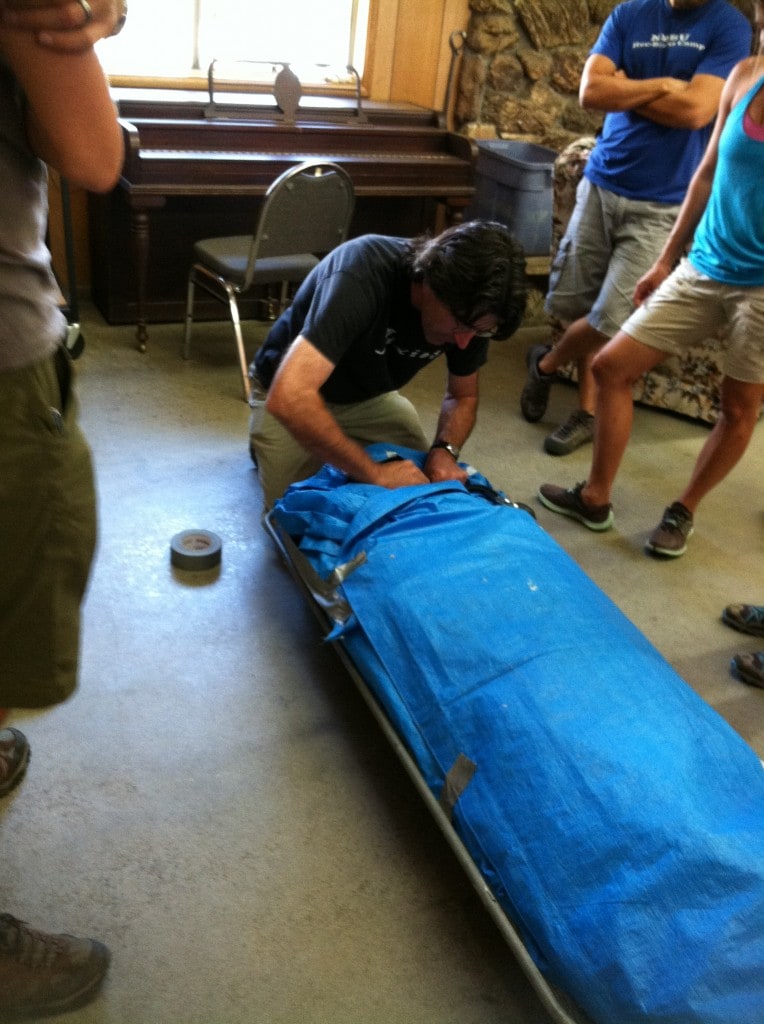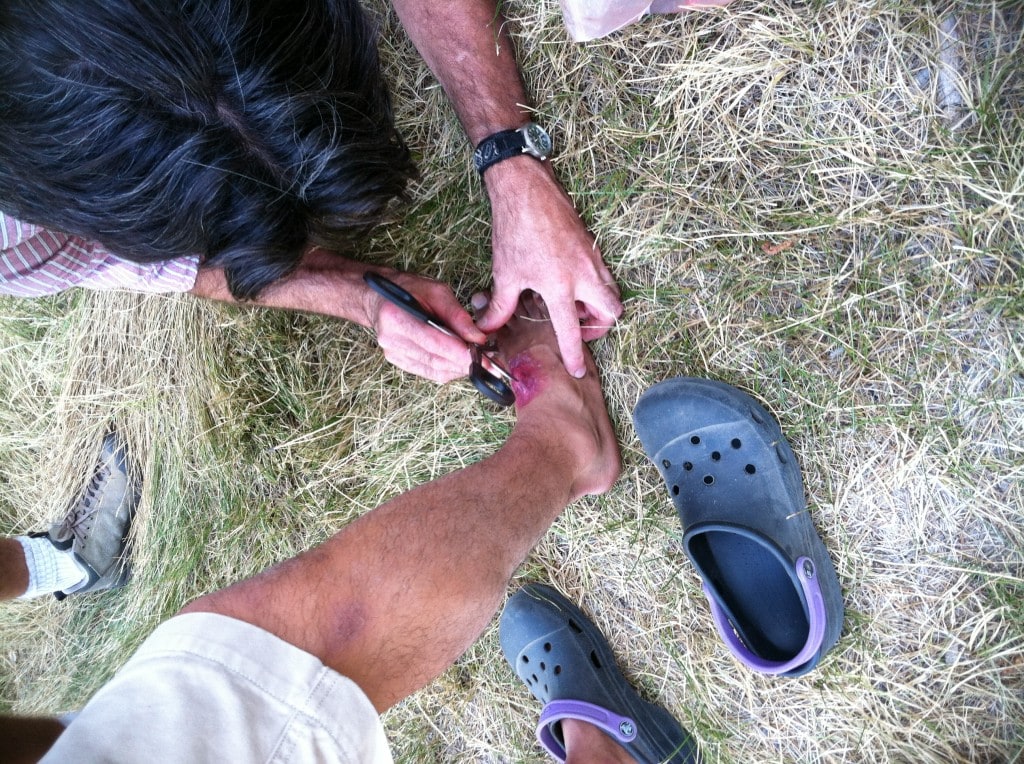WFR (Wilderness First Responder)
Last week, I had the pleasure (and consternation) of attending a Wildneress Medical Associates certification class to become a certified Wilderness First Responder. You may hear people mention “woofer” when referring to this certification, but I can guarantee you it has nothing to do with dogs, werewolves, or hucking up undigested Mexican food. It is in fact a medical certification that infuses a vast amount of back country medical information into your brain in a relatively small amount of time. Typically this class lasts for 8 days. I opted to take their condensed 5 day course, which has the reputation for bruising and bashing all information receiver type brain cells in your cranium. A large amount of pre-course work is required for this format. Believe me, I would have rather taken the 8 day course, but since I have a very limited amount of precious vacation time away from my current job, the necessity for preservation of as much vacation time as possible led me to take the 5 day course. Some interesting information you learn about in this course includes: how to set bones, how to reduce simple dislocations (shoulder, patella, digits), how to take vitals, how to treat anaphylaxis, how to deal with asthma attacks, back country CPR, how to manage wounds in the back country (including impaled objects), spine injury assessment and stabilization, basic life support techniques, how to splint/stabilize broken bones, and how to administer Epinephrin (EpiPen or injection). Even now, just thinking about all that information gives me a slight recoil and stress response.
The class not only includes all of the above information, but also how to approach and assess patients in the field. There are many simulation drills which require you to approach a person, determine their condition, and decide how they should be treated immediately.

John Jackson demonstrates how to package a patient for hypothermia before transportation
The last simulation of the class was part of the “pass or fail” assessment criteria for certification. My case involved a patient who had been struck by lightning, fell off of the top of a rock, and fractured their pelvis. When I arrived on the “scene”, the patient was unresponsive (unconscious), had no pulse, was not breathing, and a “friend” was in complete panic mode, beating on the patient’s chest and saying “Don’t die, Matt! Don’t die!”. After pulling the frantic friend away from Matt, I checked Matt’s pulse and found none. I moved Matt to a flat area, started doing CPR, and sent the secondary (we were working in pairs) to get the AED. For the layman, an AED is the thing in the hospital that shocks the bejeezus out of you when you are basically dead, and the shock is preceeded by “Clear!”. My associate returned with the AED and we administered. The patient’s pulse came back, but no breathing. I administed rescue breathing for a few minutes, and then the patient coughed and starting breathing. Whew! At least he’s not dead any more… Now the hard part, assessing the rest of the problems the patient could be having, deciding if they require urgent evacutation, and utilizing the proper technique in treating each problem. We did a complete head to toe examination of the patient, noticed an irregular heart beat and vital signs that indicated volume or cardiogenic shock, and then assessed the fractured pelvis. We stabilized/bound the fractured pelvis, transferred the patient to a litter (while maintaining his spine in a stabilized anatomical position), and transported him to an air field. I hope that scenario never happens in real life!
In the end, this class was amazingly eye opening and well structured. The phrase “knowledge is power” takes on a different context when the knowledge can save a person’s life. Or drastically improve their situation after an accident. I really hope that I never have to use any of the techniques or information I learned in this class on a client or friend, but if a situation develops where I need the information, I am ready!

John Jackson putting the finishing touches on a make up job mimicking a sting ray stinger laceration
August 21, 2013. Posted by: nelsonday